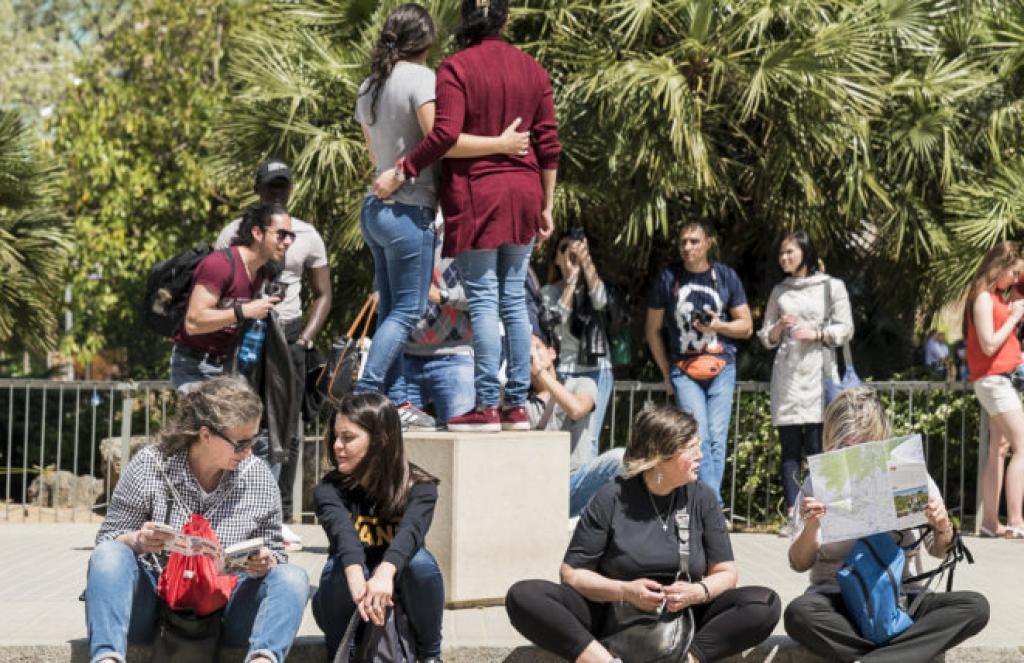Thessaloniki gets ready for its metro launch in November
The underground rapid transit lines have been under construction for almost two decades due to various project delays
 TheMayor.EU logo
TheMayor.EU logo 
Barcelona is taking steps to better control the movements and sizes of organized tourist groups, Source: Ajuntament de Barcelona
This and other good practices have been set as new standards for the tourism industry with a view to minimizing inconvenience for the locals
The Barcelona City Hall has revised and updated an agreement with local tour guide associations with the aim of sustainably managing the tourist flows to the city. The guidelines in the agreement stipulate the steps to be taken so that mass tourism will not cause disruption of daily life for the residents there.
The main points include the limitation of tourist groups to less than 30 people and the adaptation of their size to the urban spaces they visit. Another requirement is the use of radio guidance systems (of the so-called whisper system) and the commitment on part of the guides not to use megaphones and to reduce noise and noise pollution. If the guiding activities are carried out on public transport, it must always be done with the use of a radio guide system and following an agreement with the transport operators.
Barcelona is one of the most popular tourist destinations on a global scale. Together with other European cities, such as Amsterdam and Venice, it has been constantly searching for ways to balance the increased inflows of tourists, and the money they bring, with the impact they cause on local resources. And to do it in a way that doesn’t degrade the local character of the places for the communities living there.
With the revised agreement, the city authorities are exacting firmer commitments from tour guide companies to show concern for the urban environment and the daily life unfolding on its streets. In fact, tourism overcrowding has been cited as a barrier that creates inaccessibility to public spaces for local residents.
In that regard, the guides will have to ensure that 50% of the pedestrian streets width will remain free for other people. Special attention has been paid to the Ciutat Vella medieval district of Barcelona, which attracts a lot of tourism, yet also counts with the narrowest streets.
In that district, the tour guides can only lead groups of no more than 15 people. Likewise, many of the streets there will be converted to one-way streets for tourism groups in order to create a seamless flow.
There is a commitment to revise the agreement after one year to incorporate the improvements that are considered appropriate and to ensure a good fit between organized tourism and neighbourhood life.

The underground rapid transit lines have been under construction for almost two decades due to various project delays

Now you can get your wine in Talence by paying directly in Bitcoin

That’s because the state has to spend money on updating the railway infrastructure rather than subsidizing the cost of the popular pass

Rethinking renewable energy sources for the urban landscape

The examples, compiled by Beyond Fossil Fuels, can inform and inspire communities and entrepreneurs that still feel trepidation at the prospect of energy transition

Now you can get your wine in Talence by paying directly in Bitcoin

The 10th European Conference on Sustainable Cities and Towns (ESCT) sets the stage for stronger cooperation between the EU, national and local level to fast track Europe's transition to climate neutrality.

At least, that’s the promise made by the mayor of Paris, Anne Hidalgo

The underground rapid transit lines have been under construction for almost two decades due to various project delays

At least, that’s the promise made by the mayor of Paris, Anne Hidalgo

Hostal de Pinós is located in the geographical centre of the autonomous region

Despite its church-y name, the district has long been known as the hangout spot for the artsy crowds

Urban dwellers across the EU are having a say in making their surroundings friendlier to people and the environment.

Forests in the EU can help green the European construction industry and bolster a continent-wide push for architectural improvements.

Apply by 10 November and do your part for the transformation of European public spaces

An interview with the Mayor of a Polish city that seeks to reinvent itself

An interview with the newly elected ICLEI President and Mayor of Malmö

A conversation with the Mayor of Lisbon about the spirit and dimensions of innovation present in the Portuguese capital














